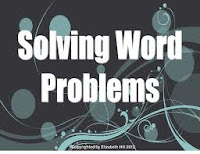 |
As I strive to support technology and creativity in mathematics. I wonder what schools are ahead of the crowd with Web 2.0 technology? What major changes did they make? How have their students and teachers adapted? What advantages do their students have? How can all schools benefit? How can the gap in access to technology in different communities be closed? If we ever plan to make our own schools better, we need to know what the top schools are doing in their classrooms.
Here are the top ranked high schools
in the nation:
-----------------------------------------------
According to Web 2.0: New Tools, New Schools, the biggest difference between Web 1.0 and Web 2.0 seems to be that information can now be created and modified instead of just being distributed and consumed. Students, teachers, and all other users are the makers of the material on the web, with Web 2.0. According to the textbook, this is important because it gathers collective intelligence. This collective intelligence can benefit students all over the country. This means that students need access to the devices that support this technology, which could be a disadvantage for schools in poorer communities.
Looking back at the past, students in the top schools always had access to the latest technology and the most trained teachers. This was almost always based on socioeconomic conditions. A higher socioeconomic status of a community usually meant a better school. This was unfortunate for poorer communities because as students graduated or dropped out, the chances of landing a good job were slim. Therefore, the cycle continued.
Technology has given poor communities a chance to break the cycle. It allows all students an opportunity to access the same information. To prove this, look at students in other countries that lagged behind the U.S. years ago. They now have access to the same educational information through technology. Because their communities were driven to take advantage of this information, their students are now ahead of U.S. students. It only makes sense that we use technology to our advantage for the sake of our students. Investing in technology would be the best way to have top trained teachers, high achieving students, and better job potential for students in all communities.





